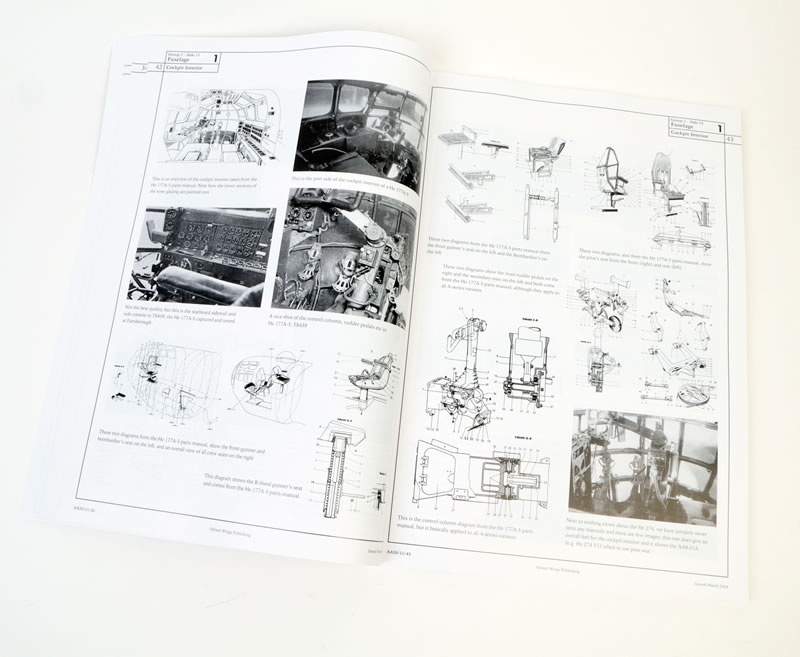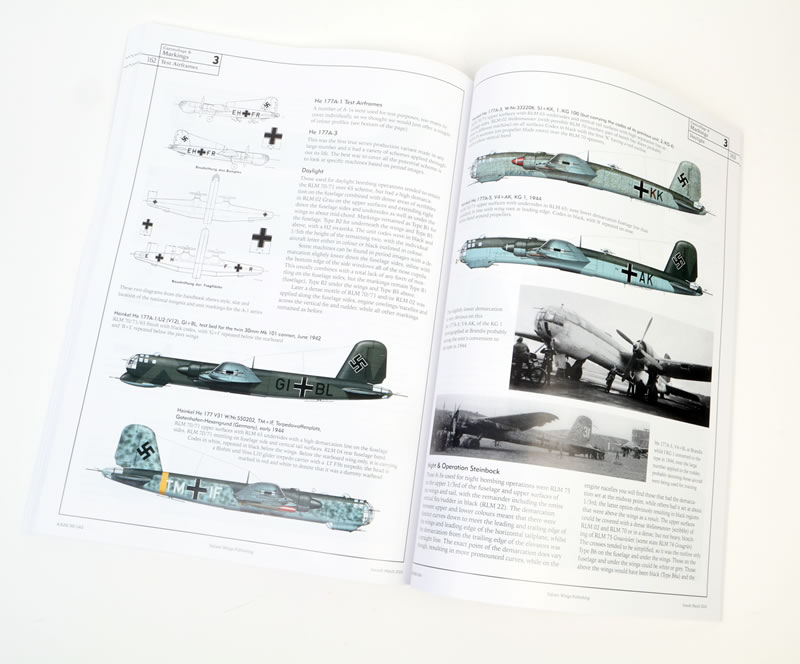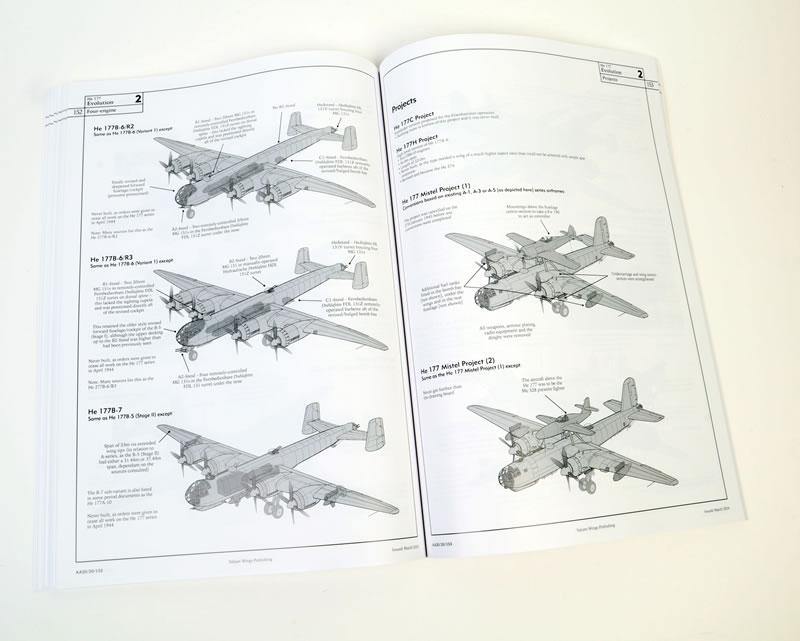The Heinkel He 177 Greif
by Richard A. Franks

Valiant Wings Publishing
Airframe Album No. 20
S u m m a r y |
| Publisher and Title: |
The Heinkel He 177 Greif
Airframe Album No. 20
by
Richard A . Franks
Valiant Wings Publishing |
| ISBN: |
978-1-912932-38-2 |
| Media: |
192 pages in A4 portrait mode, many photographs and walkarounds, colour profiles, historical manual drawings, line drawings and model details. |
| Price: |
GBP£25.95 plus shipping available online from Valiant Wings
GBP£25.95 plus shipping available online from Hannants
and stockists worldwide. |
| Review Type: |
First Read |
| Advantages: |
Beautifully produced on quality paper, well bound so that it can be opened flat, masses of great information - photos, drawings and colour schemes - and good lists of all things a modeller needs to produce the next masterpiece. |
| Disadvantages: |
None noted. |
| Conclusion: |
This really is an exceptionally useful volume that should be in every Luftwaffe modeller’s library, regardless of which scale one works in, or anyone with an interest in aviation history and technology. Again, I recommend it wholeheartedly. |
Reviewed by Graham Carter

This is the latest in this popular series of modelling and technical books, and as such is subtitled “A guide to the Luftwaffe’s Troubled Strategic Bomber”. Surprisingly given the aircraft’s protracted development, abysmal service history and the fact that none survived to be preserved, this volume manages to fill 194 A4 pages, well bound with a glossy card cover and printed on quality glossy paper that allows excellent reproduction of images and drawings. The cover is adorned with a fine illustration of an He 177 droppings its Fritz missile at dusk somewhere during the war commissioned from Arkadiusz Wrobel. There is much to appeal to the historian and technically-minded person as well as the modeller, with just a single build by Libor Jekl of the Revell 1/72 kit, as well as a listing of available kits and accessories.

Following the familiar path, the volume begins with a Preface and Introduction of some twenty-five pages covering the story of the development of the strategic bomber in Germany. There is a brief outline of the different proposed aircraft from Dornier and Junkers up until the decision to stick with the radical Heinkel idea. Pages are devoted to developments such as the four-engined 277/274 and a full list of variants and their features ends this chapter. There is also information about captured examples in the hands of the RAF, USA and France. B&W photos illustrate most of these.

Chapter 1 is seventy-seven pages entitled Technical Description, containing a veritable mass of images drawn from the contemporary technical manuals with all salient features annotated, mercifully in English! Some of these are very esoteric but much of the information will be invaluable to the modeller as well as the technophiles among you. Interspersed are many B&W contemporary photos to illustrate the drawings. The eight areas of the aeroplane treated are :- Fuselage, Tail, Wings, Engines, Undercarriage, Armament, Electrical Equipment and Miscellaneous items.
Chapter 2 covers the Evolution of the prototypes, Production and Projected versions in forty-nine pages in which each variant from the prototypes to the four-engined 277 variants is illustrated with an annotated sketch to point out the differences or special features of each, by Juraj Jankovic. And again I would request that some of these should be underside drawings to illustrate important features that do not show up in the upper three-quarter views provided. Despite this there are some weird and wonderful ideas proposed by the engineers and authorities, certainly enough to keep the ‘What-if’ modeller amused for decades of fun!

Next comes Chapter 3 of forty-four pages of information on Camouflage and Markings which provides information and photos or colour drawings by Richard Caruana of the schemes worn by examples from most users. The first flyers were in overall RLM02, then early production/service ones were in the RLM 70/71/65 splinter schemes but as the war progressed there appeared a large number of variations dependent upon the theatre and time of day of operations. Of particular interest are the French uses of the 274 as the A.A.S.01a for experimental work, as well as the Rafwaffe schemes after the war.
There then follows Chapter 4 which covers a splendid build by Libor Jekl of the 1/72 Revell A-5 variant with Fritz-x missiles. As always this is well-illustrated and written and does point out some ways to improve the kit. This particular kit is really the only easily available plastic replica of this aeroplane.
There are then three appendices covering alphabetic lists by scale, all of the kits that have been available, accessories, decals and a bibliography. A heck of a lot of work has gone into compiling these lists and I again commend the researchers for this task. The fact that this amounts to just five pages is an indication of the paucity of model-related material available for this aircraft, and much of it is unavailable these days anyway, especially if you work in 1/48!
There are no scale drawings provided for this aircraft. Despite this, the volume really is a very useful book that should be in every Luftwaffe modeller’s library, regardless of which scale one works in, and I recommend it whole-heartily. It brings together a great deal of information in a single volume and therein lies its usefulness.
This really is an exceptionally useful volume that should be in every Luftwaffe modeller’s library, regardless of which scale one works in, or anyone with an interest in aviation history and technology. Again, I recommend it wholeheartedly.
Thanks to Valiant Wings Publishing for the sample.
Review Copyright © 2024 by Graham Carter
This Page Created on 25 April, 2024
Last updated
25 April, 2024
Back to HyperScale Main Page
Back to Reviews Page
|
